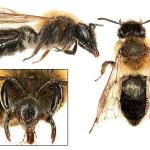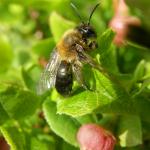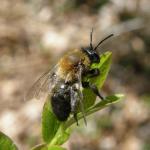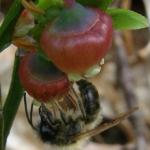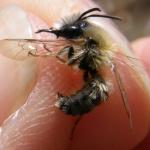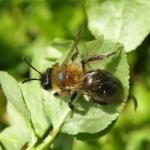Widely distributed throughout Britain, the range reaching northwards to Golspie, East Ross (Speyside) and West Ross (Beinn Eighe). It includes the Isle of Man but not the Channel Islands. Very local in southern England but more widespread further north and on moors in the south-west. In Ireland it is known from Cork, Wicklow, Dublin and Armagh. Often locally common, though its presence is entirely dependent on the occurrence of its main forage plants. A boreo-alpine species in Europe, widespread in Fennoscandia, more sporadic further south, the range there reaching the Pyrenees and the Romanian Carpathians (Dylewska, 1987). The species is also known from Japan (Tadauchi, Hirashima & Matsumura, 1987).
This bee is not regarded as being scarce or threatened.
Open woodland, moors and montane sites. On Cairn Gorm, Easterness, it has occurred at 600 m (pers. obs.).
Univoltine; early April to June, occasionally into early July.
The nest burrows seem to be widely scattered, rather than in close aggregations. As such they are rarely encountered.
Bilberry (Vaccinium myrtillus), blackthorn (Prunus spinosa), common dog-violet (Viola riviniana), cowberry (Vaccinium vitis-idaea), dandelion (Taraxacum officinale), gorse (Ulex europaeus), rhododendron (Rhododendron ponticum), thyme (Thymus polytrichus) and willow (Salix spp.).
Nomada panzeri Lepeletier is recorded as a cleptoparasite of this species (Perkins, 1919). The conopid fly Myopa buccata (Linnaeus) may be an inquiline of this Andrena as in both West Sussex and central Easterness, M. Edwards and the author have encountered this dipteran flying with this bee in sites where other solitary aculeates were scarce.
2005


